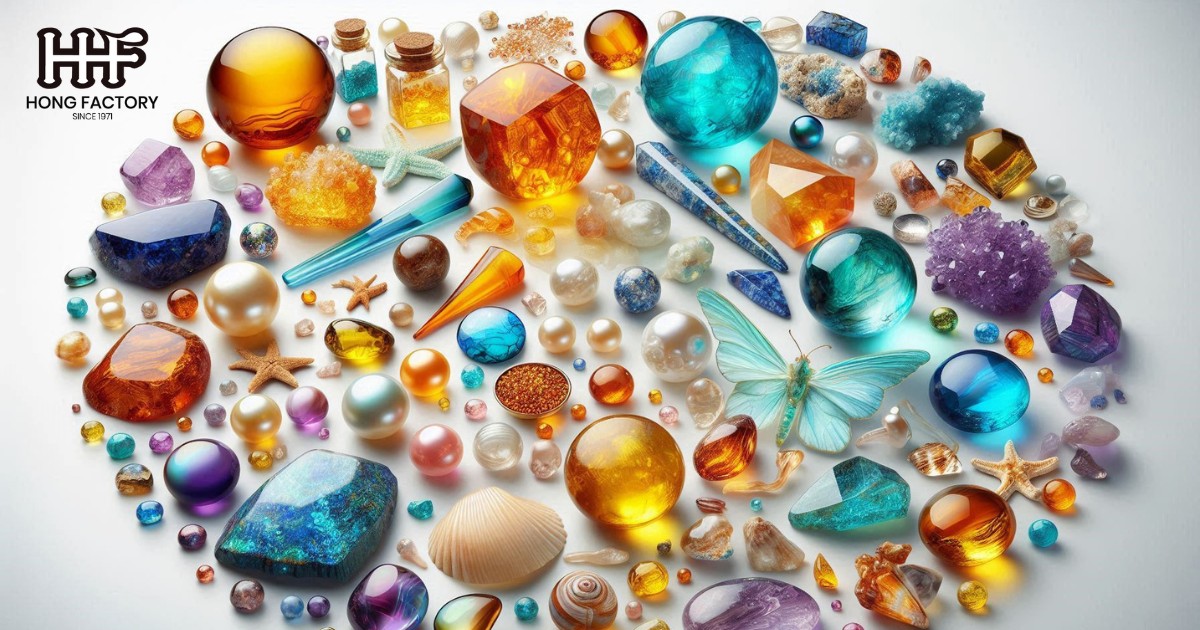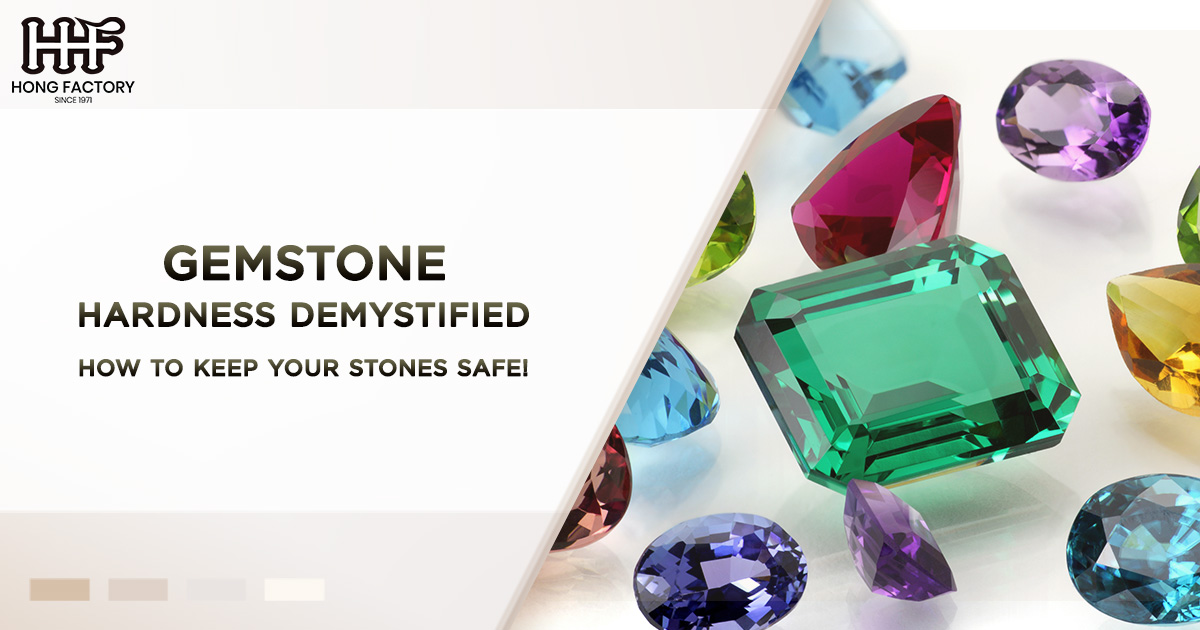Gemstones have enchanted humanity for millennia. Their captivating beauty and rarity make them highly desirable for use in jewelry, decoration, and spiritual practices. However, not all gemstones are created equal in terms of hardness, and their care requirements can vary drastically based on this critical factor. Understanding gemstone hardness can help you protect your precious stones and ensure they remain beautiful for years to come. In this article, we’ll demystify gemstone hardness, explain how it affects care requirements, and provide practical tips to keep your gems safe.
What Is Gemstone Hardness?
Gemstone hardness refers to a stone’s resistance to being scratched or damaged. The harder the gemstone, the less likely it is to be scratched or marred by everyday wear and tear. However, hardness alone doesn’t determine a stone’s overall durability—factors like toughness (resistance to breaking or chipping) and stability (resistance to heat, light, and chemicals) also play a role.
To measure gemstone hardness, jewelers and gemologists use the Mohs scale of mineral hardness, which ranks minerals on a scale of 1 to 10. Developed by German mineralogist Friedrich Mohs in 1812, this scale helps compare the hardness of different materials. Diamonds, for instance, top the scale at 10, making them the hardest known natural material, while talc ranks at 1, making it one of the softest.
Understanding the Mohs Scale
The Mohs scale is ordinal, meaning that a mineral with a higher number can scratch those with lower numbers, but the difference between two consecutive numbers is not equal. For example, diamonds (10) are about four times harder than corundum (9), even though they are only one number apart on the scale.
Here are the Mohs scale ratings for some common gemstones
- Talc – 1
- Gypsum – 2
- Calcite – 3
- Fluorite – 4
- Apatite – 5
- Feldspar – 6
- Quartz – 7
- Topaz – 8
- Corundum (Sapphire, Ruby) – 9
- Diamond – 10
How Hardness Affects Care Requirements

The hardness of a gemstone directly impacts how it should be cared for. Softer stones are more vulnerable to scratching and damage, while harder stones are more resistant but may still require protection from other forms of damage, such as chipping or heat. Let’s explore how hardness affects the care and maintenance of your gemstones.
Care Requirements Based on Hardness
- Soft Gemstones (Mohs 1-4)
Examples – Amber (2.5), Pearl (2.5-4.5), Opal (5.5-6.5)
Soft gemstones, such as amber, pearls, and opals, are highly susceptible to scratches and should be handled with extreme care. They can easily be damaged by everyday objects like keys, coins, or even hard clothing fabric.
Care Tips for Soft Gemstones
- Avoid scratches – Store these gems in separate pouches or compartments to prevent contact with harder gemstones or metals.
- Mind exposure – Avoid wearing these stones during physical activities or when using chemicals, as they are highly sensitive to chemicals, heat, and even sweat.
- Gentle cleaning – Use only mild soap and water with a soft cloth. Avoid ultrasonic cleaners or steamers, which can cause cracks or other damage.
- Medium Hardness Gemstones (Mohs 5-7)
Examples – Turquoise (5-6), Fluorite (4), Lapis Lazuli (5-6), Quartz (7)
Medium-hard gemstones are more durable than softer stones but still require careful handling. Quartz, for example, is fairly hard at 7 on the Mohs scale but can still be scratched by harder materials like topaz or diamonds.
Care Tips for Medium Hardness Gemstones
- Protection from impact – While these stones are scratch-resistant to some extent, they are still prone to chipping or cracking if dropped or knocked against hard surfaces.
- Separate storage – Store medium-hard gemstones separately from harder stones, as they can still be scratched by diamonds or sapphires.
- Regular cleaning – Clean with warm, soapy water and a soft brush. Avoid harsh chemicals, especially with porous stones like turquoise or lapis lazuli, which can absorb liquids and discolor.
- Hard Gemstones (Mohs 8-10)
Examples – Topaz (8), Sapphire (9), Diamond (10)
Hard gemstones, such as sapphires, rubies, and diamonds, are highly resistant to scratching and wear. However, they are not indestructible. Even diamonds, the hardest material, can chip or break if subjected to a sharp blow at the right angle.
Care Tips for Hard Gemstones
- Avoid impact – Even though hard gemstones are highly scratch-resistant, they can still chip if dropped or struck with force. Always handle them with care, especially during cleaning or repairs.
- Regular cleaning – Hard gemstones can be safely cleaned with ultrasonic cleaners or steamers, but it’s still best to use mild soap and water for routine maintenance.
- Watch out for settings – Hard gemstones, especially diamonds, can scratch other gems or metals in your jewelry. Ensure that the settings are secure to prevent loose stones from causing damage.
Durability and Protection – More Than Just Hardness
While hardness is an essential factor in determining the care of a gemstone, it’s not the only one. Gemstone durability also depends on toughness (the ability to resist chipping or breaking) and stability (resistance to chemicals, heat, and light). For example, despite its hardness, a diamond can still break if struck at the wrong angle, while a softer stone like jade is exceptionally tough and unlikely to chip.
Factors Affecting Durability
- Toughness – This refers to the stone’s ability to resist breaking, chipping, or cracking. Some hard stones, like topaz, have perfect cleavage, meaning they can break easily along specific planes despite being hard.
- Stability – Stability refers to how well a gemstone resists changes from exposure to heat, light, or chemicals. Stones like opal and turquoise are sensitive to sunlight and chemicals, which can cause discoloration or structural damage.
Protecting Your Gemstones
Regardless of a gemstone’s hardness or overall durability , proper care and protection are essential for ensuring longevity. Here are some additional tips to keep your gemstones safe
- Store Properly – Store gemstones separately, either in soft pouches or individual compartments in a jewelry box. This prevents them from scratching each other or being damaged by hard surfaces.
- Avoid Extreme Temperatures – Some gemstones are sensitive to extreme heat or cold, which can cause them to crack. Avoid leaving your jewelry in hot cars or exposing it to direct sunlight for extended periods.
- Be Cautious with Chemicals – Many gemstones, especially porous ones like turquoise and opal, can absorb chemicals from household cleaners, cosmetics, or even sweat. Always remove your jewelry before cleaning, swimming, or applying lotions and perfumes.
- Inspect Regularly – Check gemstone settings regularly for any signs of loosening or damage. Loose stones can fall out and get lost, or they could scratch the metal or other stones in the setting.
- Clean with Care – While ultrasonic cleaners and steamers are safe for some hard gemstones, they can damage softer or treated stones. When in doubt, stick to warm, soapy water and a soft cloth.
Conclusion
Understanding gemstone hardness and its implications for care is crucial to preserving the beauty and longevity of your precious stones. By knowing where your gemstones fall on the Mohs scale , you can tailor your care routine to their specific durability needs and ensure proper protection against scratches, chips, and other forms of damage. Whether you’re wearing a delicate pearl or a robust diamond, following these care guidelines will help keep your gemstones safe and stunning for years to come.





